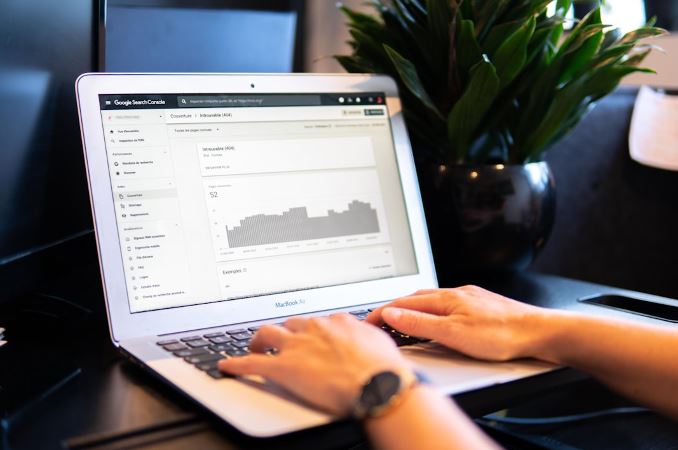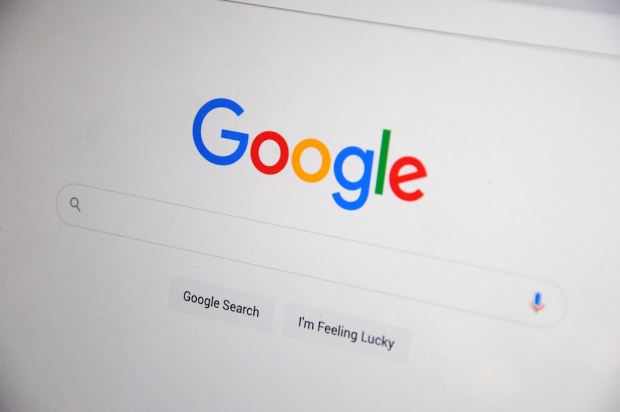You pour hours into ad copy that barely nudges your conversion rates. Most marketers miss simple shifts that make all the difference in landing page optimization. This post breaks down how to write high-converting copy, covering audience understanding, crafting...
From Search Rankings to Lead Generation: How SEO and PPC work together

Categories
You may also like…
Essential Best Practices for Mobile Website Performance
Most websites lose over half their visitors because pages don't load quickly or navigation feels clunky on phones. If your site isn't built with mobile optimization in mind, you're missing out on traffic and better rankings. This post breaks down simple steps like...
Harness the Power of Social Media Advertising for Black Friday Promotions
Black Friday marketing can make or break your holiday sales. Many small businesses miss key chances because their email campaigns and website aren't ready for the rush. This post breaks down simple marketing tips, like timing urgency-driven offers and boosting social...
In digital marketing landscape, the synergy between Search Engine Optimization (SEO) and Pay-Per-Click (PPC) advertising is more important than ever! These two powerful strategies, while distinct in their approaches, work hand-in-hand to boost your online presence and drive lead generation. By integrating SEO and PPC, you can enhance search rankings and efficiently reach your target audience. We’ll delve into how these tactics complement each other, leveraging their unique strengths to maximize your company’s success. Let’s celebrate the potential of this dynamic duo to transform your digital marketing efforts!
Understanding SEO and PPC
Defining SEO and PPC
Search Engine Optimization (SEO) is all about enhancing your website’s visibility in organic search results. It involves optimizing content, using relevant keywords, and ensuring a user-friendly site structure, among other strategies. The goal is to rank higher on search engines like Google, thus attracting more organic traffic.
Pay-Per-Click (PPC) advertising, on the other hand, is a paid marketing strategy. Advertisers bid on keywords and pay a fee each time their ad is clicked. This allows businesses to quickly appear at the top of search results, gaining immediate visibility and traffic.
While SEO focuses on building sustainable, long-term growth, PPC offers quick, targeted results. By understanding these definitions, you can appreciate how they complement each other in a comprehensive digital marketing strategy.

Key Differences Explained
SEO and PPC differ significantly in their approach and impact. SEO is a long-term strategy aimed at improving organic search rankings through content optimization, link-building, and technical improvements. It requires time and patience but can result in sustained visibility without ongoing costs.
PPC, however, is a short-term, cost-driven approach. It offers immediate visibility by placing ads at the top of search results. Businesses pay each time a user clicks their ad, making it a quick but potentially expensive way to drive traffic.
The cost structure also varies. SEO investments are generally upfront, focusing on content creation and website optimization. PPC costs are ongoing, based on bids and clicks.
Understanding these differences helps in crafting a balanced digital marketing strategy that leverages the strengths of both methods.
Why They Complement Each Other
SEO and PPC are like two sides of the same coin, each enhancing the other’s strengths. When used together, they create a powerful synergy that boosts your digital marketing efforts. SEO builds a solid foundation for long-term organic growth, while PPC provides immediate visibility and quick results.
Combining the insights from both strategies can refine targeting. SEO analytics provide data on user behavior and search trends, which can optimize PPC campaigns. Conversely, PPC data reveals high-converting keywords that can be integrated into your SEO strategy.
Moreover, having both organic and paid listings on a search results page increases your brand’s visibility and credibility. This dual presence captures a broader audience, leading to more traffic and higher conversion rates.
Benefits of Integrated Strategies

Boosting Search Rankings
Combining SEO and PPC can significantly enhance your search rankings. When both strategies are aligned, they reinforce each other, amplifying your online visibility. SEO helps build authority and trust through high-quality content and backlinks, gradually improving your organic search rankings.
Meanwhile, PPC allows for immediate exposure, placing your ads at the top of search results. This immediate visibility not only drives traffic but also provides valuable data on which keywords generate the most clicks and conversions.
By integrating these insights into your SEO strategy, you can refine your content and keyword targeting, further boosting your rankings. Additionally, having a strong presence in both paid and organic results increases your overall search engine real estate, making it easier for users to find and trust your brand.
Enhancing Lead Generation
Integrating SEO and PPC strategies significantly enhances lead generation. SEO attracts potential leads by providing valuable content that answers users’ questions and meets their needs. This approach builds trust and positions your brand as an authority, encouraging organic leads over time.
PPC complements this by quickly driving targeted traffic to your site. Through precise targeting, PPC campaigns can reach specific audiences actively searching for your products or services, leading to immediate lead generation.
Together, they improve conversion rates. PPC campaigns can test which keywords and ads perform best, offering insights to inform your SEO strategy. This data-driven approach maximizes your reach and relevance, attracting high-quality leads more efficiently.
Moreover, the combined visibility of SEO and PPC increases brand recognition, making users more likely to engage with your calls to action, thus boosting lead conversions.
Strengthening Online Presence
An integrated approach to SEO and PPC is key to strengthening your online presence. SEO ensures a solid foundation by improving your site’s visibility in organic search results. This not only attracts a steady stream of traffic but also establishes your brand as a trustworthy source of information.
PPC, on the other hand, provides immediate visibility, allowing you to capture attention quickly and effectively. With targeted ads, your brand can appear in front of your ideal audience, even for highly competitive keywords.
Together, these strategies create a comprehensive digital marketing approach that maximizes your visibility across multiple channels. This dual presence enhances brand recognition and recall, making it more likely that users will engage with your brand, whether they find you through a search engine or a paid ad.
Ultimately, integrating SEO and PPC helps ensure your brand remains top-of-mind, fostering a stronger and more enduring online presence.
Creating a Unified Approach
Aligning Goals and Objectives
Aligning goals and objectives is crucial when integrating SEO and PPC strategies. Both tactics should contribute to overarching business objectives, such as increasing brand visibility, driving traffic, or boosting conversions. By setting clear goals, you ensure that SEO and PPC efforts complement each other rather than compete.
SEO focuses on long-term growth by enhancing organic search rankings and building brand authority. PPC, meanwhile, aims for short-term gains through targeted ad campaigns that deliver immediate results. Aligning these objectives helps maintain a consistent brand message across all channels.
Regular communication between SEO and PPC teams is essential. Sharing data and insights allows for better-informed decisions and more effective strategies. For instance, PPC can test new keywords that can later fuel SEO content strategies.
Ultimately, aligning goals ensures a cohesive approach, maximizing the impact of your digital marketing efforts and driving sustainable success.

Crafting a Joint Strategy
Crafting a joint strategy for SEO and PPC involves harmonizing both approaches to maximize their effectiveness. Start by conducting a comprehensive analysis of your current digital landscape. Identify gaps and opportunities where SEO and PPC can work together.
Next, develop a unified keyword strategy. Use PPC data to identify high-performing keywords and incorporate them into your SEO efforts. This ensures your content is optimized for terms proven to drive traffic and conversions.
Coordinate your content and ad messaging to maintain consistency across platforms. Tailor your landing pages to align with both SEO-driven and PPC-driven traffic, ensuring a seamless user experience that caters to various entry points.
Regularly review and adjust your strategy based on performance metrics. This iterative process allows for continuous refinement, ensuring that your joint approach remains aligned with business goals.
By crafting a joint strategy, you create a cohesive digital marketing plan that leverages the strengths of both SEO and PPC.
Tracking and Measuring Success
To ensure the success of your integrated SEO and PPC strategy, tracking and measuring outcomes is vital. Begin by setting clear metrics and KPIs that align with your business goals, such as traffic growth, conversion rates, or ROI.
Utilize analytics tools like Google Analytics to monitor performance across both channels. Track metrics such as organic search rankings, click-through rates, and cost-per-click to gain comprehensive insights.
Regularly compare the data from both SEO and PPC efforts. This comparative analysis can reveal trends and inform strategic adjustments. For instance, if certain PPC keywords perform exceptionally well, consider adapting your SEO content to target these terms.
Additionally, conduct periodic reviews of your strategy’s effectiveness, adjusting tactics to optimize results. By maintaining a data-driven approach, you ensure a responsive and adaptable marketing strategy.
Ultimately, tracking and measuring success allows you to continuously refine your approach, ensuring both SEO and PPC contribute effectively to your unified marketing goals.

Challenges and Solutions
Overcoming Budget Constraints
Managing budget constraints is a common challenge when integrating SEO and PPC strategies. Prioritizing cost-effective tactics is key to maximizing your resources. Start by identifying which strategy provides the best return on investment for your specific goals.
For SEO, focus on optimizing existing content and improving site architecture, which can enhance organic visibility without significant expenditure. Leveraging free tools for keyword research and analytics can also reduce costs.
In PPC, use budget-friendly strategies like targeting long-tail keywords or implementing geotargeting to control spending. Regularly review and adjust bids to ensure funds are allocated to the most effective campaigns.
Consider a phased approach, initially investing more in PPC for immediate results while gradually increasing SEO efforts for long-term benefits. This balance helps manage costs while building a sustainable online presence.
Ultimately, strategic planning and careful allocation of resources can help overcome budget constraints, ensuring your integrated strategy remains effective and cost-efficient.
Balancing Short-Term and Long-Term Goals
Balancing short-term and long-term goals is essential in an integrated SEO and PPC strategy. PPC excels at delivering immediate results, quickly driving traffic and conversions through targeted ads. However, this requires ongoing financial investment, making it ideal for short-term objectives like product launches or time-sensitive promotions.
Conversely, SEO is a long-term strategy aimed at gradually improving organic rankings and building a sustainable online presence. It requires patience and continuous effort but ultimately leads to cost-effective, enduring results.
To balance these goals, allocate resources proportionately. Use PPC to achieve quick wins and gather data that can inform SEO strategies. Meanwhile, invest in SEO for steady growth, ensuring your brand maintains visibility even after PPC budgets are exhausted.
Regularly review your strategy to ensure alignment with evolving business objectives. This dynamic approach allows you to capitalize on immediate opportunities while securing long-term success.
Addressing Skill Gaps
Addressing skill gaps is crucial for the successful integration of SEO and PPC strategies. Both fields require distinct skill sets, from technical SEO knowledge to PPC campaign management expertise. To bridge these gaps, consider cross-training your team. Encourage collaboration between SEO and PPC specialists to share insights and strategies.
Invest in ongoing education and training programs. This can involve attending workshops, webinars, or certification courses to keep your team updated on the latest industry developments and best practices.
Hiring specialists or consultants can also fill immediate skill gaps, providing expert guidance and execution. However, fostering internal talent for the long term is often more sustainable and cost-effective.
Additionally, leverage technology and tools designed to simplify and automate complex tasks. This can help your team manage campaigns more efficiently while reducing the learning curve.
By proactively addressing skill gaps, you ensure your team is equipped to execute an integrated digital marketing strategy effectively.
Future Trends and Opportunities
Emerging Technologies in Digital Marketing
Emerging technologies are reshaping the landscape of digital marketing, offering new opportunities for integrating SEO and PPC strategies. Artificial intelligence (AI) and machine learning enhance targeting capabilities, allowing for more personalized and efficient campaigns. These technologies analyze vast amounts of data, predicting user behavior and optimizing ad placements.
Voice search is another growing trend, impacting SEO tactics. As more consumers use devices like smart speakers, optimizing content for voice queries becomes essential. This involves focusing on natural language and long-tail keywords that reflect conversational search patterns.
Augmented Reality (AR) and Virtual Reality (VR) offer immersive experiences that can be leveraged in PPC campaigns. These technologies engage users in unique ways, enhancing brand interaction and recall.
Staying ahead requires embracing these technologies and adapting strategies accordingly. By leveraging emerging tools and trends, businesses can create more dynamic, effective digital marketing campaigns that resonate with modern consumers.
Adapting to Algorithm Changes
Adapting to algorithm changes is an ongoing challenge in digital marketing, especially for SEO and PPC. Search engines frequently update algorithms to improve user experience and combat spammy practices. These changes can significantly impact search rankings and ad performance.
To stay ahead, maintain a flexible strategy. Regularly monitor industry news and updates from search engines to anticipate potential impacts. Invest in tools that provide insights into algorithm changes, helping you adjust quickly.
Focus on creating high-quality, user-centric content. This approach aligns with most search engine objectives, ensuring your SEO efforts remain resilient against fluctuations. For PPC, continuously optimize ad campaigns based on performance data and emerging trends.
Encourage a proactive rather than reactive mindset within your team. By staying informed and adaptable, you can mitigate the effects of algorithm changes, maintaining a steady online presence.
Adapting effectively ensures that your digital marketing strategies continue to drive success despite an ever-evolving landscape.

Expanding Global Reach
Expanding your digital marketing strategy to reach a global audience presents a vast array of opportunities. With the internet’s borderless nature, businesses can tap into international markets more easily than ever before. To achieve this, tailoring both SEO and PPC campaigns for global reach is essential.
Start by researching and identifying target markets. Understand cultural nuances and language preferences to optimize content and ads effectively. Implement international SEO tactics, such as utilizing hreflang tags, to ensure search engines serve the right language and regional URLs to users.
In PPC, consider geo-targeting your campaigns to focus on specific countries or regions. This approach ensures your ads reach audiences most likely to convert, maximizing the return on investment.
Additionally, adjust keyword strategies to accommodate local search behaviors and terminologies. This localization effort not only improves visibility but also enhances user engagement and trust.
By strategically expanding globally, your business can unlock new growth opportunities and strengthen its international presence.



